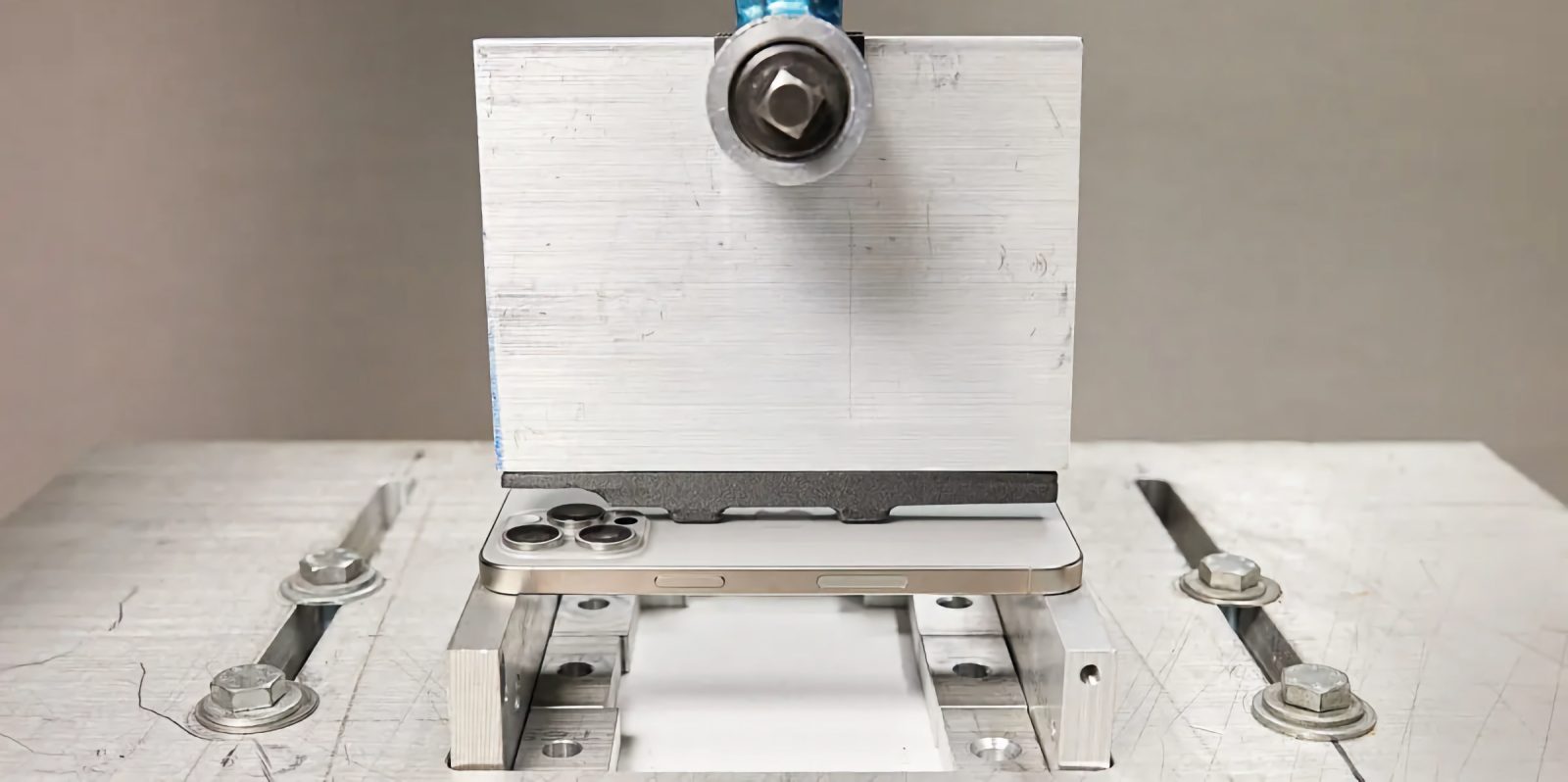
Last week, the YouTube channel JerryRigEverything found that he could crack the back of his iPhone 15 Pro Max by bending it in his hands. People have wondered whether the new titanium frame with rounded edges is less durable, although it’s worth noting the smaller 6.1-inch iPhone 15 Pro did not crack in the same way.
Consumer Reports tried to repeat the findings with the use of a slightly more scientific methodology, and found that the iPhone 15 Pro Max did not crack under the pressure. Consumer Reports was one of the leading critics of the iPhone design back when the iPhone 6 ‘#Bendgate’ was a thing.
As a reminder, the iPhone 15 Pro and Pro Max design sandwiches the display and the frosted rear glass with a titanium frame around the sides. The titanium is fused to an internal aluminium chassis. Titanium itself is a strong material, but what people have wondered is whether the rounded edges where the titanium meets the glass makes the glass is more prone to breaking or cracking, than the 14 Pro flat edge design.
In the Consumer Reports video below, they test the device using a compression test machine which applies 100 pounds of pressure across the length of the device. The phone flexed and then recovered after the pressure was released, but there were no cracks to be seen.
Top comment by Jared
You mean the guy with a box cutter and a blowtorch who tries to bend phones with his bare hands isn't conducting scientific tests?!
Consumer Reports also tested the Pro Max in a drop test machine, in which a tumbler makes the phone drop onto stone base 100 times in succession. The phone survived with no damage. Does this mean the JerryRigEverything video is faked or invalid? Of course not. But it perhaps does show the liability of relying on just one test as proof that something is worse. The true picture of iPhone durability is only revealed in the aggregate.
In any case, don’t try and bend your phone kids.
Separately, the new titanium iPhone design has also been blamed as the culprit for the overheating issues. Apple released a statement this weekend indicating that is not the case, and customers should look forward to an iOS 17 software update soon that will fix a bug where the phone could heat up more than intended.
Follow Benjamin: @bzamayo on Twitter, Threads, and Mastodon
FTC: We use income earning auto affiliate links. More.






Comments